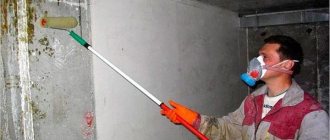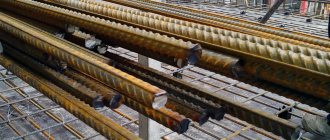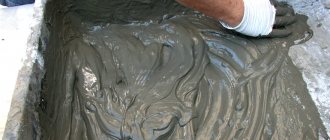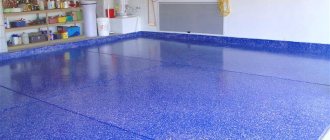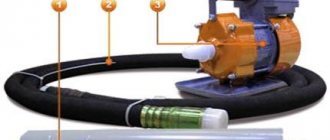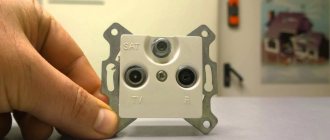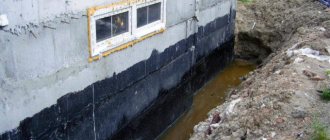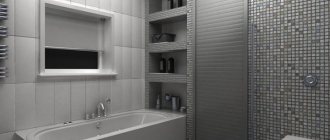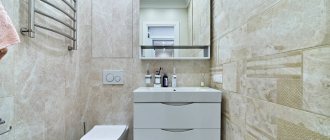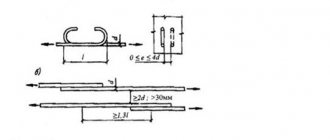Damage to concrete foundations by fungus and mold is a fairly common and very dangerous phenomenon. If you notice dark or black spots on surfaces, you must urgently take appropriate measures - use an antiseptic for concrete and treat the affected areas.
After all, the appearance of microorganisms on the walls can not only completely destroy the material and deprive it of its operational properties, but also cause the appearance of various respiratory diseases, allergic reactions, asthma and other health problems.
To combat microorganisms, modern manufacturers offer a lot of different means, which must be selected in accordance with the specific problem, the characteristics of the operation of the room, the building materials used in the construction of the structure, etc.
Specifics of concrete
Concrete is a material that is quite susceptible to the effects of various biodestroyers, which act like toxins and chemicals, destroying the structure of the structure from the inside and outside. Spores easily attach to the base, multiply and develop on it, and penetrate inside the structure. Contaminated concrete is difficult to process and is dangerous for people. And ordinary cleaning of the top layer is not enough here - if infection has already occurred, you need to urgently use special means.
The main factors contributing to infection:
- High humidity levels
- Unheated building with average temperature (no severe frost or heat)
- Rooms where wet things are regularly dried
- Plumbing that is incorrectly installed or has become unusable, resulting in regular leaks
- A large number of indoor plants that increase air humidity
- Lack of ventilation system in bathrooms
- Volumetric furniture located too close to the walls
To avoid problems, concrete impregnation should be carried out during the installation and operation of structures.
Need for use
It is advisable to use an antiseptic for concrete against mold and other parasites before finishing work begins. The fungus multiplies quickly when there is a high accumulation of moisture, an air temperature of +20-26 C, and insufficient ventilation. Therefore, as a preventive measure, it is necessary to protect at least toilets, bathrooms, verandas, etc. Then it will be more difficult to remove mold indoors.
The main factors for the presence of infection:
- Colored spots on damp lesions
- Destruction of the finish: plaster falls off, paint crumbles, wallpaper falls off (inside)
- Rapid destruction of building cladding (outside)
- Characteristic smell of rot
The most dangerous stage for humans is the stage of the spread of microorganisms, when an obvious aroma appears and black spots are already noticeable on surfaces. In this case, you need to act quickly, while the fungus can still be removed and the spores have not scattered and begun to affect internal organs.
How to apply correctly
Who among us has not encountered such an unpleasant problem as the presence of mold and mildew on the walls of a room, bathroom, kitchen, bathroom, balcony. Surely there are no such people.
Moreover, sometimes it seems that molds are omnipresent; they can appear in any place. Unfortunately, this is true. At the same time, the question of how to treat a wall against mold and mildew does not lose its relevance today.
Therefore, it does not hurt to once again consider it in all details and details.
What is the threat?
The problem is aggravated by the fact that mold not only disrupts the external aesthetics of residential apartments, but also damages building materials. Once on the damp surface of concrete, decorative stone or brick, the spores of the insidious microorganism germinate in thin layers and destroy it. At this point, willy-nilly, you will begin to think about how to treat the wall against mold and mildew.
However, the list of negative consequences does not end there. The worst thing is that as a result of the appearance of rot and grayish plaque on the walls, our health suffers.
A number of dangerous diseases develop: bronchitis, pneumonia, thrush, conjunctivitis, eczema, bronchial asthma, allergies, etc. And this is another good reason why you cannot put off searching for an answer to the question of how to treat a wall against mold and mildew.
It should be remembered that it is optimal to deal with the problem in question at the initial stage of its occurrence.
Causes
However, before thinking about how to treat the wall against mold and mildew, it is very important to determine why they formed there. This way you can prevent the appearance of rot and grayish plaque in the future.
Please note that air temperatures of twenty degrees Celsius and above are considered favorable for the development of fungus. Mold can also form at lower temperatures. The optimal air humidity for fungal activity is 95 percent.
Why does mold appear? The main reason is defects in the construction of the house. In particular, protection against mold and mildew will be minimal if, for example, there is poor-quality insulation of interpanel seams or high residual moisture in building materials.
Another reason is the capillary suction of moisture along the walls of moistened foundations. As a rule, this happens in old houses where there is no waterproofing.
In modern buildings, fungus most often occurs due to the total use of plastic window technology, which provides insulation from noise and heat accumulation. As a result, the natural ventilation processes of the rooms are disrupted and high humidity is formed.
For the fight against rot and plaque to be effective, “you need to know the enemy by sight.”
Molds
Most often it is they who have to be destroyed. Molds primarily attack building materials. They leave traces in the form of blue, green, black and brown deposits. As a result of the vital activity of these microorganisms, it is often necessary to make repairs, and in some cases, rebuild the house.
Blue fungi
They spoil the structure of the wood, and as a result of their influence the surface of the house itself becomes an unsightly gray-blue shade. Again, it is not only the aesthetic component of the building that suffers.
The blue seeps through the paint film and thereby forms peculiar waterfalls, that is, it creates routes for moisture to penetrate into the wood.
Well, if water has thoroughly penetrated the material, then mold will form here.
It should also be said about the dangers of rot, which comes in three types: white, brown and bacterial. The first spoils the cellulose, but the color of the wood changes slightly.
The second type affects the material in such a way that the wood splits. Bacterial rot spoils the structure of the tree from the inside, and its color changes to gray or darker.
In parallel, the transparency of the material deteriorates due to the decomposition of cellulose.
The so-called white house mushroom poses a particular threat to wooden structures. In just one month, he is able to completely ruin an oak floor four centimeters thick. In the past, if this happened, the house was set on fire so that the fungus could not migrate to other buildings.
If we talk about wet rot, then it leaves stripes of dark brown or yellowish shades on stone or concrete, after which cracks remain. Dry rot changes the color of the affected wood to brown, and then the material is completely destroyed.
Prevention measures
The best defense against mold and mildew is prevention. However, it should be emphasized once again that the most important thing is to identify the causes of the problem.
Always remember the normal level of humidity in the premises. Ensure that ventilation and heating comply with design guidelines.
Do not forget about heating devices - they must be correctly located in the end rooms.
In the premises, install hinged windows made of plastic, and for ventilation you need to open them completely. Do not close bathroom doors tightly - leave a small opening for outside air to enter.
Be sure to treat the affected areas with special compounds up to the level of the brick wall (if necessary). Today, mold and mildew repellents are sold in a huge variety in hardware stores. You can opt for Dali antiseptic or Biotol spray.
If you have to treat mold and mildew in the basement, then do not forget to first carry out a set of works on draining and waterproofing the object, in order to thus ensure protection against the ingress of groundwater and melt water.
You can fight rot and plaque using improvised means. One option to solve the problem is to treat the affected areas with creosote. You can also use a special solution that can be easily prepared at home. To prepare, you will need to dilute one kilogram of copper sulfate or one and a half kilograms of iron sulfate in ten liters of water.
Some recommend another composition. To prepare it, you will need to dilute one and a half kilograms of copper sulfate and two liters of acetic acid in ten liters of water. The above compounds are used to treat the affected areas.
Antiseptics
Removal of mold and mildew is most often carried out using antiseptics. They are manufactured in industrial conditions based on special chemical compositions. Such drugs have a strong antimicrobial effect.
Today, water-soluble antiseptic preparations, as well as products that use a diluent, are especially popular among consumers. Antiseptics made on an oil basis are also quite in demand at present, in particular, creosote is one of them.
Currently, there is a whole arsenal of various antiseptic drugs, but it is quite difficult to find agents with a universal spectrum of action.
When purchasing this or that chemical product, do not be lazy to ask the sales consultant about how to use it correctly.
We will briefly talk about what specific actions should be taken to remove mold and mildew from the walls. First of all, you should remove the wallpaper. Then use a stiff brush or spatula to clean off the damaged layer of plaster. The next step is to treat the walls with a cleaning compound to open the pores and remove the cement film.
Next, you need to prepare a store-bought mold removal composition and apply it to the walls using a roller, and this should be done over the entire surface. Antiseptic primer will help restore the color of the wall, make it more durable and remove particles of dirt from the base of the surface. In addition, it increases the durability of the finish.
Next, you need to prepare a dry waterproofing mixture, or you can purchase it in advance at the store. Using a brush, you need to apply the composition to the walls. The next step is to prime them with a deep penetration agent. Then the walls should be plastered and puttied. After this, re-priming with a deep penetration mixture is necessary. At the final stage, wallpaper is glued.
We suggest you familiarize yourself with Penoplex glued or attached to dowels
After this procedure, your walls will remain dry for a long time, and condensation will not begin to form, and, therefore, mold will no longer ruin your life. All the best!
Regardless of whether the external area is covered with a protective agent or the internal one, there is a single rule, the violation of which is fraught with consequences for the worker’s body. It is necessary to work with solutions strictly with protective coverings: respirators, goggles, gloves.
Inside
The technology for applying antifungal protection is simple: two coatings are applied with a roller, wide brush or spray. The first is stronger and denser. The second is for preventive purposes, not so abundant. This is necessary in order to prevent the recurrence of mold and mildew, since the spores of microorganisms are incredibly tenacious and penetrate deep into the walls.
Professionals recommend treating not only the area of the wall affected by mold, but all rooms together. This is necessary for reasons of prevention - spores of fungi and mold eventually move to unprotected walls.
Outside
Damage to the outer part of the wall
It is necessary to remove mold lesions on the exterior of houses and buildings using the same method as inside. However, here it is already possible to use more powerful means of protection. Building facades need anti-mold treatment every seven to eight years.
Treatment of concrete from fungus and mold involves complete initial cleaning of the walls with a wire brush from plasters and decorative coatings right down to the base of the concrete wall. Areas of mold must be removed with a spatula or sandpaper.
There is another secret to successfully eliminating lesions: before cleaning, musty areas of the walls must be thoroughly dried. But with direct mechanical removal of lesions, the mold must be moistened.
It is important to understand! This is done so that spores of fungi and mold become heavier and do not spread throughout the premises.
Types of antiseptics
An antiseptic for concrete against fungus must be chosen very carefully. Many chemicals are highly toxic, while organic products may not demonstrate the desired effectiveness in the fight. Depending on the problem and operating characteristics, one type of means is selected.
The entire variety of impregnation mixtures can be divided into 2 main groups: for treatment at the stage of installation of structures and those that are used to treat already infected areas and prevent their further spread. Also, the preparations can be used in different ways: used for surface impregnation and deep penetration (optimally 50 centimeters), introduced into primer solutions for floors, ceilings, walls, or into concrete mixtures in the form of antiseptic additives.
Main types of impregnations by composition:
Water soluble
Solutions of water-based mineral salts penetrate the material well, but destroy metal reinforcement, so they are not used on the surface of iron and steel. The substance is easily washed out and serves most effectively as an additive added to plaster and concrete mortars. The drugs are used to protect internal surfaces and are an effective safe alternative to other types of products.
Previously, copper sulfate was used to treat concrete surfaces, which does not burn and does not stink. Sold in the form of a blue powder, diluted with water in a ratio of 1:100, used for repeated processing (3-4 times). They also use sodium fluoride with lime, sodium fluoride (dangerous, must be mixed with alabaster, cement, plaster, diluted with water), and alabaster.
Organic
Suitable for any base (artificial stone, concrete, brick, ceramic tiles), toxic, require the use of personal protective equipment, do not destroy steel reinforcement, quickly (within 1-2 impregnations) destroy even the most active and highly multiplied microorganisms and retain many properties years. Not used in residential premises, only in garages, basements, technical buildings.
Oily
They are not washed out of the structure of the material, are used for non-residential rooms and outdoor work, are toxic to the point of poisoning, leave dark stains and have an unpleasant aroma. You won’t be able to paint the wall afterwards; the downside is that it’s flammable. The most popular products: carbolineum, phenol, creosote.
Combined
They are made up of several ingredients and are supplied in the format of concentrated mixtures for subsequent dilution with water for prevention and use in concentrated form for the treatment of infections.
Antiseptic for concrete against mold: how to treat it
Building structures based on mineral binders (cement, gypsum) - concrete, mortars and plasters - are characterized by the presence of small air pores in their volume, into which moisture and mold spores can enter.
The waste product of mold is the release of solutions of acids and alkalis, which gradually dissolve cement stone and gypsum compounds. A sign of the presence of mold are spots of black, blue and green, and a sign of structural destruction is swelling and peeling. Often the food medium for the development of mold is salts dissolved in water, which entered the structure with moisture from the environment.
During new construction and reconstruction, to combat the causes of mold, the following measures must be taken:
- Construct foundation structures from concrete with increased water resistance. For this purpose, a water-repellent concrete additive CEMMIX CemAqua is used - it provides volumetric water-repellency, reduces water absorption, and prevents the appearance of efflorescence and mold.
- External structures must be vapor-permeable, but treated with a water-repellent composition CEMMIX CemAquaStop - a product for treating the surface of building structures to prevent the appearance of fungi and mold. - Installation of reliable waterproofing of all building structures from the foundation to the roof, in all wet rooms, on balconies, loggias, terraces. Prevent the penetration of moisture through seams and junctions, including in places where various communications pass (water supply, sewerage, electricity, heating mains, etc.)
- Provide normal heating, ventilation and air conditioning (in accordance with current building codes SP60.13330.2012 “Heating, ventilation and air conditioning”).
- If mold appears on the surface of building structures, then it is necessary to take measures to destroy the mold that has appeared and clean the structures with special compounds. To do this, chemical fungal cleaning agents (fungicides or antiseptics) are used. We recommend using CEMMIX Biocid - this is a concentrate that is used for prevention and also for the destruction of mold on affected surfaces. CEMMIX Biocid also protects against damage by fungus, algae, moss, and is effective indoors and outdoors.
Work on treating the affected areas is carried out several times, depending on the degree of damage, until the mold is completely destroyed. When performing this work, you must follow the manufacturer's instructions.
Mold fungi quickly cover the surface of concrete in the event of moisture condensation. As practice shows, any living space with insufficient ventilation can be attacked by mold.
Considering that mold spores are causative agents of respiratory tract diseases, it is customary to coat concrete structures with special antiseptic compounds even before finishing or after cleaning from mold that has appeared.
- Water-soluble antiseptics. Due to the fact that their composition contains mineral salts that are aggressive to steel reinforcement, they have a narrow scope of application. They have good adhesion. A popular dry water-soluble antiseptic that reliably protects concrete and plaster from harmful biological factors is “Gambit”, the properties of which correspond to the “strongest” combined materials;
- Antiseptics based on organic solvent. They are an effective option for impregnating mold against any substrate: concrete, artificial stone, brick and ceramic tiles. These are toxic substances, the use of which requires the use of Personal Protective Equipment. They do not destroy steel reinforcement, effectively destroy fungi and retain their properties for several years. One of the most popular “representatives” of organic solvent antiseptics is the “Nortex” disinfector;
- Combined. They are produced using complex technology from several “ingredients”. They are sold in the form of concentrated solutions that are diluted with water in one proportion or another. The most popular combined antiseptic for concrete can be called the material “Ceresit CT-99”. This antiseptic can be applied both to a concrete base and to plastered or painted walls. “Ceresit CT-99” not only kills mold fungi, bacteria, moss and lichen, but also does not allow their spores to germinate (the longest protection).
Almost any antiseptic for concrete against mold is toxic and dangerous to human health. Therefore, when applied to the surface, the skin, mucous membrane and eyes should be reliably protected with special personal protective equipment. After work, the premises are thoroughly ventilated.
If the surface of the concrete is already affected by mold, no, even the most powerful antiseptic will help. In this case, a set of measures is necessary:
- Determining the causes of mold;
- Thorough removal of fungal plaque by mechanical means;
- Thorough drying of the surface;
- Antiseptic treatment;
- Surface treatment with a water-repellent composition “on concrete”.
In this case, the antiseptic should be applied not only to the infected part of the surface. It is best to treat all rooms with the composition. After all, sooner or later, fungal spores will resume their activity and “populate” another suitable place in the room, kitchen, corridor or hallway with mold.
Ways to prevent re-injury:
- Regularity of treatment, regardless of the type and “power” of the antiseptic;
- In rooms with high humidity, treatment with an antiseptic is carried out at the first signs of mold;
- In heated, dry rooms, one treatment is sufficient;
- In unheated rooms, the frequency of treatment is once every 15 years;
- Building facades require treatment every 7-8 years;
- Sienas of buildings protected by ventilated curtain facades - once every 30 years.
In this case, disinfectant compounds can be added to plaster, cement and concrete mortar at the mixing stage. In general, the antiseptic consumption is 6 kilograms of material per 10 m3 of concrete, cement or plaster mortar. In addition, it is necessary to ensure effective ventilation of the premises and, if possible, to prevent excessive waterlogging with water and water vapor.
Mold and mildew actively spread in rooms with very high air humidity. You can purchase a hygrometer, a special device that measures the level of moisture in the air. By the way, it is present in some models of wall clocks. Normal humidity is from 30% to 60%. If the room is damp, the humidity is higher than normal, then ventilation is necessary, and this should be done regularly.
Fans and air conditioners can also help combat this problem. For warehouses, a ventilation system is installed. If sealed plastic windows are installed in the room, they may interfere with quality ventilation. To correct the situation, it is worth installing ventilation valves on each window.
It is also not recommended to place furniture close to walls that have wallpaper, so as not to create a favorable environment for the development of mold.
Mold can form on the walls if the roof leaks or when water from the apartment above gets on them. Here you need to be careful and prevent undesirable consequences in time. But what to do if mold and mildew have already appeared? Here you should determine the type of walls, and then follow the instructions.
Before work, be sure to protect your respiratory tract: wear a mask or respirator so that the fungus does not damage your health. Next, remove the wallpaper if it is pasted. They will have to be thrown away because the fungus cannot be washed off of them.
Using a spatula, you will need to clean out the areas where mold has formed. If there is loose black plaster, it will need to be completely removed. Once this is done, take sandpaper and gently but vigorously sand the affected areas. Afterwards you will need a special fungicidal solution to treat the wall.
We invite you to familiarize yourself with Beacons for leveling the floor - installation rules
This will need to be repeated five hours after the previous treatment. Next, prime the walls with an antiseptic solution. Afterwards you can plaster them and glue new wallpaper. This process needs to be treated with special attention, because it is the incorrect treatment of the walls before wallpapering that can cause the appearance of fungus.
Brick walls
Treatment with special chemicals is suitable here: copper sulfate, alkali, lime. In some cases, household products such as laundry detergent or weed remover can also help.
Also, fungus is removed from brick walls using industrial 70 percent hydrogen peroxide.
Before you start cleaning the walls, you must put on a respirator. Next, clean the surface using a spatula, as described in the instructions for concrete walls.
If you choose alkali, then be extremely careful, because it is caustic and a very dangerous substance.
Wooden walls
First, you will need to clean off the infected areas with a wire brush or a well-sharpened knife. The wood will need to be rinsed well afterwards with detergent. It would be better to burn all cleaned wood with fungus. Afterwards, it is necessary to treat the wooden surface with chemical solutions or ordinary pharmacy peroxide (apply a 3 - 5 percent solution to the walls for about 10 minutes, and then wipe with a rag soaked in water). You can also coat the wood with vinegar after cleaning. If you decide to choose a chemical, seek advice from a specialist first.
Drywall
Be sure to wear a respirator and gloves before removing mold and mildew. It is also advisable to wear special glasses to protect your eyes. It is also better to protect curtains, carpets, furniture by covering it all with fabric or bags.
First, clean the wooden surfaces that are attached to the drywall. This way you will remove visible fungus and mold. Next, you can use the following recipe: add 2 tablespoons of dishwashing gel to a bucket of clean water, then soak a rag in the resulting solution and rinse the previously cleaned surface, and then wipe with a dry rag or towel.
Porous structure of concrete
Review of popular tools
1. Water-soluble - “Gambit” is considered the best. Water-soluble dry antiseptic of deep penetration for concrete, which reliably protects against biological parasites. Its properties are not inferior to the most powerful combined agents, but less toxic. You can also use: NORTEX-Doctor, Opti-bio 1, 2,3 (prevention).
2. Organic – the most effective disinfectant is “Nortex”; it is used in heavily contaminated areas. It protects surfaces, penetrates the structure of the monolith and creates a barrier there, preventing further infection by any bioparasites. The preparations Fongifluid Alpa (ALPA), Lakra Antimold, Mavix Bio in tandem with an organosilicon water repellent are often used in construction.
3. Oily – Belinka, Neomid and others have proven themselves to be effective in protecting external structures (roofs, facades, etc.).
4. Combined – one of the most powerful “Ceresit CT-99”. It can be applied to painted or plastered walls and concrete bases. The combination of drug ingredients kills bacteria, mold, fungi, lichen, moss, and prevents spores from germinating, providing the longest possible protection. Also used: a universal remedy for the complete elimination of fungal colonies “Anti-mold”, a universal preparation Dali, a Macrosept palette.
There are many compositions of impregnation brands. The most popular are Tiprom, Mipor, Nortex, Belinka, Ceresit, Kapatoks, Teknos Rensa Homepesuliuos, PUFAS Glutoclean. Before making a decision, it is advisable to take into account certain features of choosing a drug.
How to choose a mixture - what to consider:
- Area of application – inside or outside.
- Type of room - organic solvents are chosen for technical ones, combined and aqueous ones for residential ones. There are products created for use in wet rooms - saunas, swimming pools, bathrooms.
- The task is prevention or control of already emerging microorganisms.
- Duration of exposure, number of treatments - for outdoor work they choose toxic products that only need to be applied once and provide a long-lasting effect; for residential premises, safety is a priority, even if after the first application several more layers will need to be applied.
- The base of the preparation affects the ability to subsequently finish the surface: for example, oil solutions are not covered with anything, so they are suitable only for technical buildings.
Surface treatment
Preliminary protection
This is done before mold appears after installation or during finishing. The concentrate must be diluted in the required proportions and applied to the concrete base with a brush, roller or spray, carefully soaking every centimeter. Then wait the time specified in the instructions and repeat the procedure one more time.
When treating, it is advisable to first carry out a series of preparatory work: determine the cause of the infection, carefully remove the fungal coating with a metal brush, dry it, treat it with an antiseptic and then a water-repellent composition. In rare cases, the drug is applied directly to the colonies and this is always indicated in the instructions.
It is advisable to treat not only the affected part, but all nearby areas, even neighboring rooms. After all, there is a possibility that the spores have spread over large areas and will begin to multiply in other places in the future.
Combination
For better results, you can use products that are mixed with plasters and primers. In this case, it is possible to carry out finishing simultaneously with processing (one process), and the protection will be more effective, since it will affect not only the surfaces, but the materials themselves.
Safety
All work should be carried out in compliance with protective measures, especially when it comes to treatment using very toxic substances. Goggles, respirator, gloves are required. You also need to take care of a work uniform or a plastic raincoat, which can then be washed at high temperatures. This will prevent spores from getting into the respiratory tract and mucous membranes. It is not recommended to clean clothes, because in this way the fungi can spread to other rooms, objects, skin, etc.
How to prevent infection:
- Add disinfectants to building materials, use combined products to immediately eliminate even the possibility of the appearance of microorganisms: usually this is 6 kilograms per 10 square meters of plaster, cement, concrete composition
- Provide buildings with proper ventilation and prevent stagnation of moisture and air
- Treat the interior regularly with special products
- In case of high humidity, carry out work immediately after the damp areas darken, without waiting for the spread of colonies
- Protect structures periodically: once every 15 years, go through all unheated rooms, once every 7-8 years, pay attention to facades, once every 30 years, treat the walls of buildings that are protected by hinged ventilated facades
Causes of mold
The analysis should begin with the reasons why mold appears in homes in the first place. If they are quickly eliminated, then no treatment may be required at all.
By the way! It will be interesting to know: Section; III
This is what mold looks like under a microscope
The walls are affected by black mold
The main factor influencing the proliferation of mold fungi is high humidity (60% and above). The humidity level in a room can increase for the following reasons:
- The ventilation system is clogged or improperly designed - there is nowhere for steam to escape. This is especially true for bathrooms.
- The technology for constructing the walls has been disrupted, as a result of which they no longer allow steam to pass through.
There are other reasons, but the main ones have already been announced.
Where does mold like to live?
Gypsum grout is literally saturated with mold
It multiplies worse on concrete, but this can happen at high humidity. And if you consider that all concrete foundations in the house are finished with gypsum putty or paper, then there will always be enough space for development.
Tile tiles are affected by fungus only in very advanced cases. It will not be difficult to remove plaque from it. It is much more difficult to remove it from seams rubbed with plaster mixture.
Bathroom antiseptic against mold for treating tile joints
Wallpaper, especially paper, suffers the most from mold. You can’t just remove it - after treatment, repeated repairs are almost always required. (When re-repairing, you need to properly remove wallpaper from drywall - read about this on our website).
Mold can also actively grow on water-based paints.
Cleaning indoor walls
For work, solutions are used that have the necessary properties for specific operating conditions, materials, and the room itself. To protect a wall in a dry, unheated basement you will need one antiseptic, for a bathroom in an apartment - a completely different one. Typically, water-based anti-fungus and mold primers are used for interior work.
Stages of the procedure:
- Moisten the affected areas to prevent the spores from spreading further.
- Clean the floor, walls and ceiling with a spatula or sandpaper, or a metal brush, going well beyond the damage. Throw away all the finishing without trying to erase (from wallpaper, for example) microorganisms.
- Saturate the surface with a disinfectant, let it dry for the required time, and reapply a layer. In difficult cases, apply periodically up to 5 times.
- Perform a clean finish.
Name, consumption, packaging volume, average price of popular antiseptics
The consumption of the protective agent directly depends on the concentration of the solutions. The higher the concentrated properties, the less product itself is needed.
Also, the consumption depends on the area of the walls where you will have to get rid of fungus and mold.
The average consumption of antiseptic impregnations at the concrete mixing stage is 6 kg x 10 m3. Antiseptic can also be mixed with plaster solutions.
The consumption of products without mixing with concrete or plaster is indicated on the packaging. Additional instructions can be obtained from specialists at points of sale.
| Name | Consumption rate | Packing | Price |
| Ceresit ST-99, concentrate | 80-90 g/m2 aqueous solution of concentrate in a ratio of 1:2-1:5 | 1 liter | 360 rubles |
| Kapatox | 50 – 100 ml/m2 | 5 liters, plastic canister | 1,200 rubles |
| Nortex disinfectant for concrete | 80-160 g/m2 depending on the degree of surface damage | 21 kg, plastic canister | 4,700 rubles |
| Gambit Antiseptic N-5, concentrate | 0.3-0.5 liters per 1 m2 of an aqueous solution of concentrate in 10 liters of water | 1 kg, plastic jar | 4,500 rubles |
We suggest you familiarize yourself with Which side to lay the vapor barrier on the ceiling, how to lay isospan on the roof?
External wall treatment
This type of work should be trusted only to effective products with the most powerful effects and hydrophobic properties. Therefore, you should think about safety in advance by preparing a protective suit, goggles, gloves, and a respirator.
First, stains are mechanically removed from the surface, everything damaged by mold is removed, then the most concentrated solution is generously applied. It will not remove pores embedded in concrete, but will suppress them. Then you need to apply another layer. The top can be covered with finishing materials, which must contain a directional disinfectant.
Review of antiseptics for artificial stone
All modern anti-mold preparations for concrete belong to the bactericidal class. Disinfecting compounds are designed to destroy mycelium and comb cells, preventing them from multiplying. Supplied in the format of impregnations and primers for internal and external use.
Due to the fact that mold is extremely resistant to various poisons and tends to spread again and again where the spores have fallen, it is fought with substances that can completely destroy the structure of the parasite’s cells. These are sulfuric acid salts, acids, caustic alkaline compounds, oxygen and chlorine-containing compositions. All of them are divided into water-soluble, organic, oily and combined.
In diluted form they are used for the prevention of clean surfaces, in concentrated form - for the treatment of already infected areas. The cost of the drugs depends on the ingredients used and the country of registration of the manufacturer. Therefore, preference is usually given to domestic products.
Typically, the products are supplied in canisters of 3-10 liters in liquid or dry form. The cost fluctuates in a very wide range depending on the packaging, manufacturer, and working composition. Material consumption may vary; be sure to read the instructions when diluting.
Treatment of affected surfaces
- Take care of safety: prepare special personal protective equipment, isolate children and animals from the access area.
- Prepare the surface by removing all microorganisms and drying.
- Dilute the drug according to the instructions and in accordance with the task (prevention requires less concentration, removal of the parasite requires more).
- Apply impregnation with a brush, roller or spray. Repeat the procedure one or more times.
- In difficult places exposed to humidity, with poor ventilation, carry out treatment regularly, as usual - add a disinfectant to the finishing materials every time repairs are performed.
